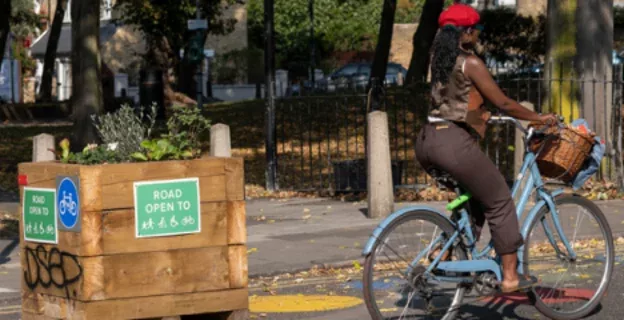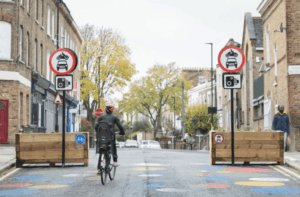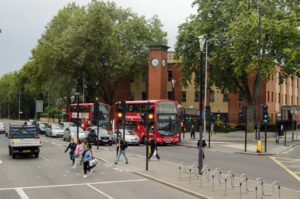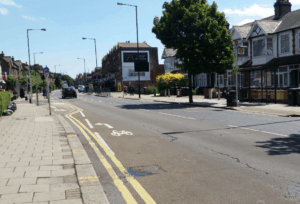Council chiefs in Haringey are continuing to face stiff opposition to low-traffic neighbourhoods (LTNs) despite claiming that the schemes are achieving their aims.
Residents last night urged Haringey Council to reconsider the LTNs, which they said had failed to reduce traffic, damaged local businesses and caused more “isolation, deprivation and misery” for people with disabilities, according to the Haringey Community News.
Three LTN trials – in Bounds Green, Bruce Grove and St Ann’s – were introduced last year in a bid to stop rat-running and reduce air pollution. The schemes are designed to prevent through-traffic from using residential streets, with fines issued to drivers who pass through camera-enforced ‘filters’ without an exemption.
It led to a series of protests from residents who claimed the LTNs would increase congestion and pollution, particularly on boundary roads on the edge of the schemes.
An interim review of the LTNs, which was presented to a meeting of the council’s cabinet on Tuesday (11th), said traffic counts had fallen by more than 50% on roads within all three LTNs but increased by between 6% and 7% on boundary roads.
The report also claimed there was “encouraging” data on air pollution and road safety. It said pollution within the LTNs was going up at a lower rate than the rest of London and Haringey, while speeding was down in most of the roads within two of the LTNs.
But residents who attended the cabinet meeting disputed the findings and called for a rethink, as another anti-LTN demonstration took place outside the venue in George Meehan House, Wood Green. One resident, Victoria Ward, said the council had failed to properly consult with residents, reduce pollution or increase cycling.
Ms Ward said that reductions in car numbers were “unsubstantiated by the data”. She said the way cars were counted had inflated the number of vehicles registered inside the LTNs prior to their rollout, so the reduced counts could be a “fiction”. Even if the data was correct, she said, the council was not tracking how far cars were now travelling.
Another resident, Tara Hawkins, told the meeting that local businesses had seen their suppliers disrupted and customer numbers fall because of the LTNs, leading to a drop in revenue. She said her business was down by 50%, leaving her unable to pay the bills.
A survey carried out in Myddleton Road, which is within the Bounds Green LTN, revealed all of the businesses who responded said they had seen a drop in customers during the past four months, which they believed was caused by the LTN.
But Mike Hakata, the council’s deputy leader and cabinet member for climate action, environment and transport, defended the Haringey LTNs. Responding to the deputations, he said that the past 20 years had seen increases in congestion and “road danger” and that air pollution was now the country’s “number one environmental health crisis”.
Cllr Hakata assured the residents that traffic counters had recorded “every single vehicle going over at every speed” and the data showed a “really positive impact” so far, adding that there had been an “extensive consultation” with residents.
He told the meeting that LTNs had been introduced while the country was suffering an economic downturn, and that shopping areas in other boroughs, such as Orford Road in Waltham Forest, had remained “thriving” destinations following the introduction of LTNs.
Cllr Hakata said: “The reality is that when we have looked at the footfall and card transactions, what we have found is that what is going on in the LTN areas matches what is going on in the wider borough, which is what you would expect.”
The deputy leader told the meeting that residents with disabilities were among those “most negatively impacted by motor traffic”. He said changes had been made to the schemes following engagement with groups representing those with disabilities.
Cllr Hakata said: “We are the only borough with such an extensive exemption procedure, with access for all Blue Badge holders and people with health conditions to be able to get around and circumvent those filters. But it is really important that those filters work, to disincentivise those people who are taking unnecessary journeys and clogging up the roads.”
Cabinet members agreed to note the findings of the interim review of the LTNs, make a series of changes to the existing schemes and introduce the exemptions for Blue Badge holders. The council will continue to gather feedback and data on the schemes before deciding whether to make them permanent.





















